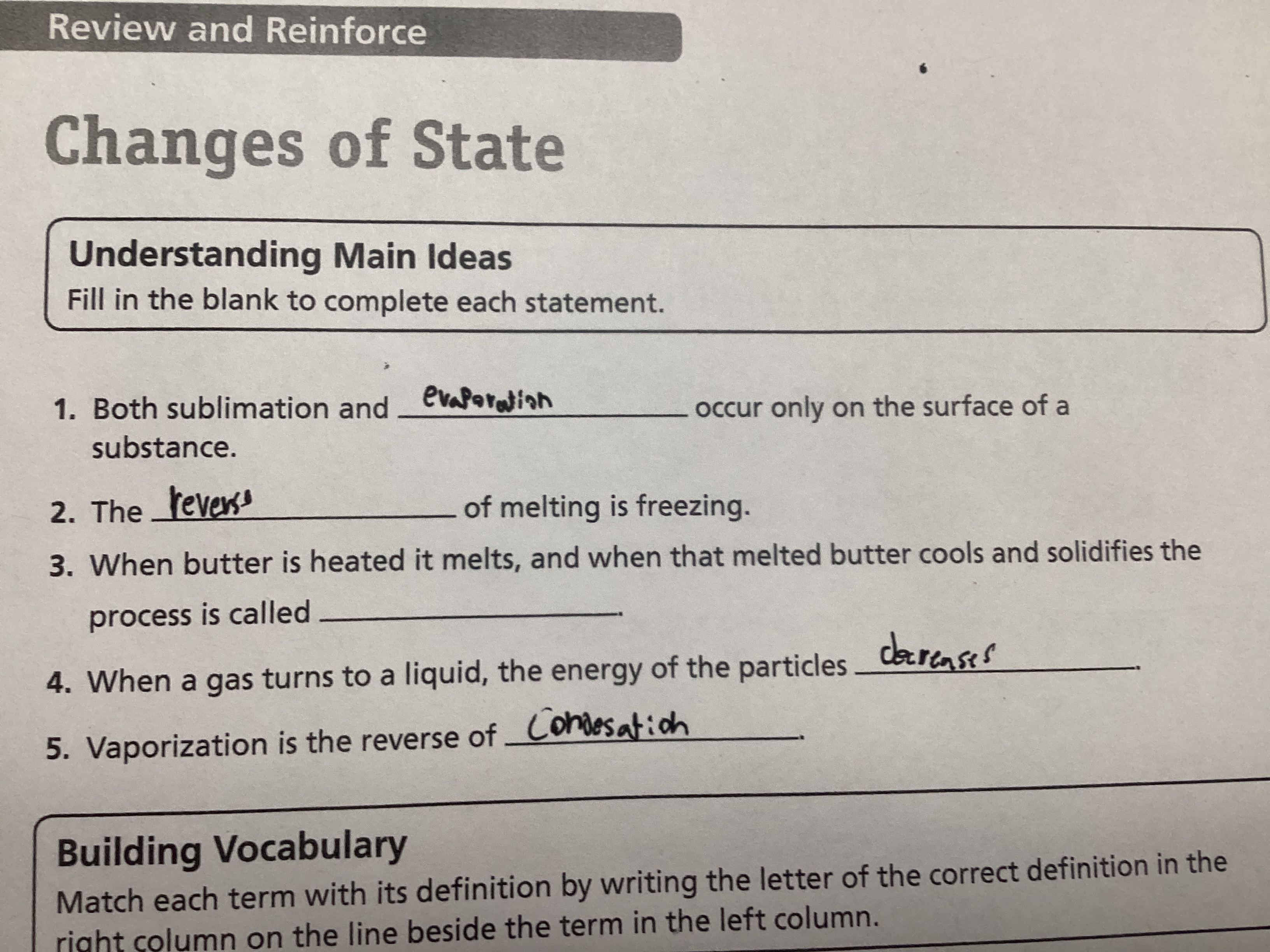Both sublimation and __________ occur only on the surface of a substance. The __________ of melting is freezing. When butter is heated it melts, and when that melted butter cools a... Both sublimation and __________ occur only on the surface of a substance. The __________ of melting is freezing. When butter is heated it melts, and when that melted butter cools and solidifies the process is called __________. When a gas turns to a liquid, the energy of the particles __________. Vaporization is the reverse of __________.

Understand the Problem
The question is asking to fill in the blanks related to the concepts of changes of state in matter, specifically sublimation, evaporation, melting, freezing, and condensation. This involves understanding the definitions and relationships between these physical processes.
Answer
The blanks are: evaporation, freezing, solidification, decreases, condensation.
Both sublimation and evaporation occur only on the surface of a substance. The reverse of melting is freezing. When butter is heated it melts, and when that melted butter cools and solidifies the process is called solidification. When a gas turns to a liquid, the energy of the particles decreases. Vaporization is the reverse of condensation.
Answer for screen readers
Both sublimation and evaporation occur only on the surface of a substance. The reverse of melting is freezing. When butter is heated it melts, and when that melted butter cools and solidifies the process is called solidification. When a gas turns to a liquid, the energy of the particles decreases. Vaporization is the reverse of condensation.
More Information
These phase changes involve energy shifts that affect the state and structure of matter.
Tips
Common mistakes include confusing sublimation with deposition and vaporization with evaporation.
Sources
AI-generated content may contain errors. Please verify critical information